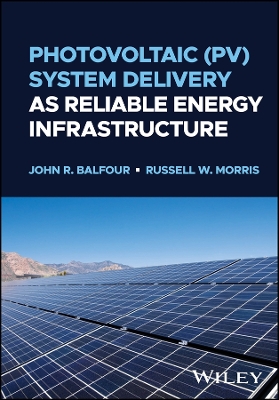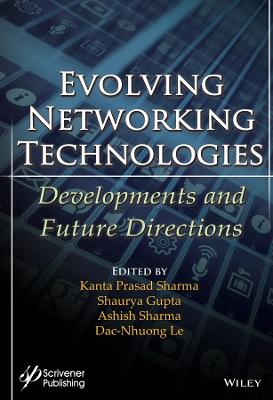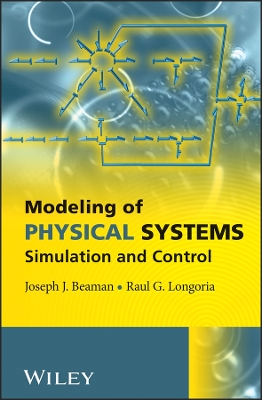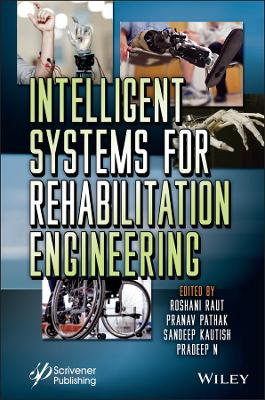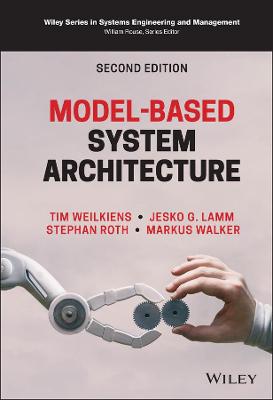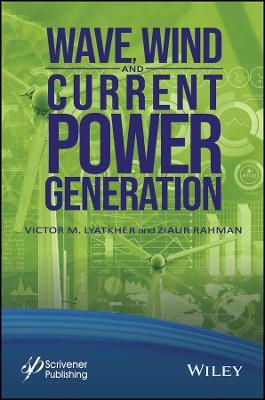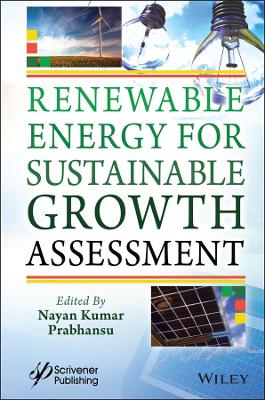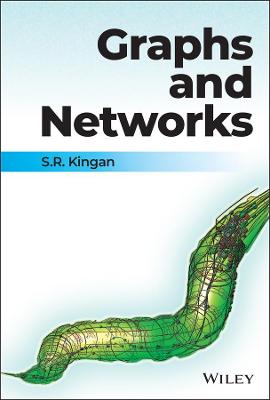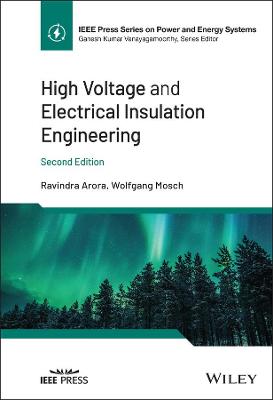Introduction to Nanoscience and Nanotechnology
 -15%
portes grátis
-15%
portes grátis
Introduction to Nanoscience and Nanotechnology
Binns, Chris
John Wiley & Sons Inc
10/2021
416
Dura
Inglês
9781119172239
15 a 20 dias
1004
Acknowledgments x
Introduction to Second Edition 1
1 Size Matters 13
1.1 The Fundamental Importance of Size 13
1.2 The Magnetic Behavior of Nanoparticles 16
1.3 The Mechanical Properties of Nanostructured Materials 26
1.4 The Chemical Properties of Nanoparticles 27
1.5 Nanoparticles Interacting with Bacteria and Viruses 29
Problems 31
References 32
2 Nanoparticles and the Environment 35
2.1 Nanoparticles in the Atmosphere 35
2.2 Atmospheric Nanoparticles and Health 39
2.2.1 Entry Via the Lungs 39
2.2.2 Entry Via the Intestines 42
2.2.3 Nanoparticles and the Skin 43
2.2.4 Air Quality Specifications 44
2.3 Nanoparticles and Clouds 44
2.4 Marine Aerosol 48
2.5 Effect of Cosmic Rays on Atmospheric Aerosol 50
2.6 Nanoparticles in Space 51
2.7 Environmental Applications of Nanoparticles 52
2.7.1 Water Remediation Using Magnetic Nanoparticles 52
2.7.2 Conversion of Waste Plastics to High-Grade Materials (Upcycling) 55
Problems 57
References 59
3 Carbon Nanostructures: Bucky Balls and Nanotubes 61
3.1 Why Carbon? 61
3.2 Discovery of the First Fullerene - C60 62
3.3 Structural Symmetry of the Closed Fullerenes 64
3.4 Smaller Fullerenes and "Shrink-Wrapping" Atoms 68
3.5 Larger Fullerenes 70
3.6 Electronic Properties of Individual Fullerenes 72
3.7 Materials Produced by Assembling Fullerenes (Fullerites and Fullerides) 76
3.8 Discovery of Carbon Nanotubes 81
3.9 Structure of Single-Wall Carbon Nanotubes (SWNTs) 82
3.10 Electronic Properties of SWNTs 84
3.11 Electronic Transport in Carbon Nanotubes 86
3.12 Field Emission from Carbon Nanotubes 87
3.13 Mechanical Properties of Nanotubes 88
3.14 Thermal Conductivity of Nanotubes 92
3.15 Carbon Nanohorns 93
3.16 Carbon Nanobuds and Pea Pods 94
Problems 95
References 96
4 Graphene 99
4.1 Background 99
4.1.1 Low-Dimensional Materials 99
4.1.2 Discovery of Graphene 101
4.2 Electrical Properties of Graphene 101
4.2.1 Electrical Conduction in Normal Metals 101
4.2.2 Electrical Conduction in Semiconductors 104
4.2.3 Electrical Conduction in Graphene 107
4.3 Graphene as a Testbed for Relativistic Quantum Effects 112
4.4 Thermal Conductivity of Graphene 112
4.5 Mechanical Strength of Graphene 116
4.6 Superconductivity in Graphene Bilayers 117
4.7 Current Technological Applications of Graphene 120
4.7.1 Graphene Batteries 120
4.7.2 Graphene Nanoelectromechanical Systems (NEMS) Accelerometers 124
4.7.3 Graphene Membranes for Water Desalination 125
4.8 Summary 126
Problems 126
References 128
5 The Nanotechnology Toolkit 131
5.1 Making Nanostructures Using Bottom-Up Methods 131
5.1.1 Making Nanoparticles Using Supersaturated Vapor 131
5.1.2 Sources Producing Nanoparticle Beams in Vacuum 133
5.1.3 Synthesis of Alloy, Core-Shell, and Janus Nanoparticles 137
5.1.4 Mass Selection of Charged Nanoparticle Beams in Vacuum 141
5.1.5 Aerodynamic Lensing and Mass Selection of Neutral Nanoparticles 147
5.1.6 Plasma, Spark and Flame Metal Aerosol Sources 147
5.1.7 Size Selection of Nanoparticles in Aerosols 150
5.1.8 Chemical Synthesis of Nanoparticles in Liquid Suspensions 153
5.1.9 Biological Synthesis of Magnetic Nanoparticles 156
5.1.10 Gas-Phase Synthesis of Hydrosols 157
5.1.11 Size Determination of Nanoparticles in Liquids 157
5.1.12 Synthesis of Graphene 160
5.1.13 Synthesis of Fullerenes 162
5.1.14 Synthesis of Carbon Nanotubes 163
5.1.15 Controlling the Growth of SWNTs 165
5.2 Making Nanostructures Using Top-Down Methods 167
5.2.1 Electron-Beam Lithography 168
5.2.2 Manufacturing Nanostructures Using Focused Ion Beams 171
5.3 Combining Bottom-up and Top-Down Nanostructures 176
5.4 Imaging, Probing, and Manipulating Nanostructures 180
5.4.1 Scanning Tunneling Microscope 180
5.4.2 Manipulating Atoms and Molecules with STM 185
5.4.3 Scanning Tunneling Spectroscopy (STS) 189
5.4.4 Atomic Force Microscopy 192
5.4.5 AFM Imaging of Biological Samples in Liquids 195
5.4.6 Dip-Pen Nanolithography 198
5.4.7 Electron Microscopy 200
Problems 204
References 206
6 Single-Nanoparticles Devices 211
6.1 Data Storage on Magnetic Nanoparticles 211
6.2 Quantum Dots 218
6.3 Quantum Dot Solar Cells 222
6.4 Nanoparticles as Transistors 226
6.5 Carbon Nano-Electronics 232
6.5.1 Fullerene SET 232
6.5.2 Porphyrin Molecule SET 234
6.5.3 Carbon Nanotube SET 236
6.5.4 Limitations of SETs in Applications and Moving to Multiple Transistor Devices 236
6.6 Carbon Nanotube Light Emitters and Detectors 239
Problems 240
References 240
7 Hydrosols, Nanobubbles, and Nanoscale Interfaces 243
7.1 Reynolds Number 243
7.2 Brownian Motion 245
7.3 Stability of Hydrosols 250
7.4 Nanobubbles 257
7.4.1 Fundamental Considerations 257
7.4.2 Synthesis of Bulk Nanobubbles 260
7.4.3 Properties of Bulk Nanobubbles 262
7.4.4 Surface Nanobubbles 265
7.4.5 Applications of Nanobubbles 267
7.5 Nanofluidics 271
Problems 277
References 278
8 Magic Beacons and Magic Bullets: The Medical Applications of Functional Nanoparticles 281
8.1 Nanoparticles Interacting with Living Organisms 282
8.1.1 Targeted Nanovectors for Therapy and Diagnosis 282
8.1.2 Uptake of Nanomaterials by the Body 284
8.1.3 Types of Core Nanoparticle in Nanovectors 286
8.1.4 Targeting to Tumors by Enhanced Permeability and Retention (EPR) 288
8.1.5 Some Elementary Cell Biology 289
8.1.5.1 The Outer Cell Membrane (Plasma Membrane) 290
8.1.5.2 Membrane Proteins 291
8.1.5.3 Internal Cell Structure 292
8.1.5.4 Cytoskeleton 292
8.1.6 "Trojan horse" Targeting Using Stem Cells and Macrophages 294
8.1.7 Molecular Targeting 296
8.1.8 Magnetic Targeting 302
8.2 Treatment of Tumors by Hyperthermia 304
8.2.1 Biological Response to Heating 304
8.2.2 Magnetic Nanoparticle Hyperthermia (MNH) 307
8.2.2.1 Current State of the art in Clinical Trials 307
8.2.2.2 Limitations on the Applied RF Magnetic Field 309
8.2.2.3 Heating Mechanisms of Magnetic Nanoparticles in an AMF 311
8.2.2.4 New Nanoparticles for MNH 316
8.2.3 Optical Hyperthermia Using Near-Infrared Radiation 318
8.2.4 Hyperthermia with Carbon Nanotubes 326
8.3 Medical Diagnosis and "Theranostics" using Nanomaterials 327
8.3.1 Magnetic Resonance Imaging (MRI) and Contrast Enhancement Using Magnetic Nanoparticles 328
8.3.2 Magnetic Particle Imaging (MPI) 331
8.3.3 Imaging Using Au Nanoparticles 337
8.3.4 Imaging Using QDs 339
8.4 Antibacterial and Antiviral Applications of Nanoparticles 343
8.4.1 Nanoparticle Delivery Systems for Covid 19 Vaccines 343
8.4.2 Antibacterial Action of Ag Nanoparticles 343
8.4.3 Antiviral Action of Nanoparticles 346
Problems 347
References 348
9 Radical Nanotechnology 355
9.1 Locomotion for Nanobots and Nanofactories 356
9.1.1 Movement Within the Nanofactory using Kinesin 356
9.1.2 Moving Small Cargo in the Nanofactory: DNA Walkers 364
9.1.3 Propulsion for Swimmers 369
9.2 Onboard Processing for Nanomachines 374
9.3 Medical Micro/Nanobots 374
9.4 Molecular Assembly 376
Problems 379
References 379
10 Prodding the Cosmic Fabric 381
10.1 Zero-Point Energy of Space 381
10.2 The Casimir Force 385
10.3 The Casimir Force in Micro-and Nanomachines 389
10.4 Controlling the Casimir Force Using Phase-Change Materials 394
10.5 Repulsive Casimir Forces 395
Problems 397
References 398
Glossary 401
Index 403
Acknowledgments x
Introduction to Second Edition 1
1 Size Matters 13
1.1 The Fundamental Importance of Size 13
1.2 The Magnetic Behavior of Nanoparticles 16
1.3 The Mechanical Properties of Nanostructured Materials 26
1.4 The Chemical Properties of Nanoparticles 27
1.5 Nanoparticles Interacting with Bacteria and Viruses 29
Problems 31
References 32
2 Nanoparticles and the Environment 35
2.1 Nanoparticles in the Atmosphere 35
2.2 Atmospheric Nanoparticles and Health 39
2.2.1 Entry Via the Lungs 39
2.2.2 Entry Via the Intestines 42
2.2.3 Nanoparticles and the Skin 43
2.2.4 Air Quality Specifications 44
2.3 Nanoparticles and Clouds 44
2.4 Marine Aerosol 48
2.5 Effect of Cosmic Rays on Atmospheric Aerosol 50
2.6 Nanoparticles in Space 51
2.7 Environmental Applications of Nanoparticles 52
2.7.1 Water Remediation Using Magnetic Nanoparticles 52
2.7.2 Conversion of Waste Plastics to High-Grade Materials (Upcycling) 55
Problems 57
References 59
3 Carbon Nanostructures: Bucky Balls and Nanotubes 61
3.1 Why Carbon? 61
3.2 Discovery of the First Fullerene - C60 62
3.3 Structural Symmetry of the Closed Fullerenes 64
3.4 Smaller Fullerenes and "Shrink-Wrapping" Atoms 68
3.5 Larger Fullerenes 70
3.6 Electronic Properties of Individual Fullerenes 72
3.7 Materials Produced by Assembling Fullerenes (Fullerites and Fullerides) 76
3.8 Discovery of Carbon Nanotubes 81
3.9 Structure of Single-Wall Carbon Nanotubes (SWNTs) 82
3.10 Electronic Properties of SWNTs 84
3.11 Electronic Transport in Carbon Nanotubes 86
3.12 Field Emission from Carbon Nanotubes 87
3.13 Mechanical Properties of Nanotubes 88
3.14 Thermal Conductivity of Nanotubes 92
3.15 Carbon Nanohorns 93
3.16 Carbon Nanobuds and Pea Pods 94
Problems 95
References 96
4 Graphene 99
4.1 Background 99
4.1.1 Low-Dimensional Materials 99
4.1.2 Discovery of Graphene 101
4.2 Electrical Properties of Graphene 101
4.2.1 Electrical Conduction in Normal Metals 101
4.2.2 Electrical Conduction in Semiconductors 104
4.2.3 Electrical Conduction in Graphene 107
4.3 Graphene as a Testbed for Relativistic Quantum Effects 112
4.4 Thermal Conductivity of Graphene 112
4.5 Mechanical Strength of Graphene 116
4.6 Superconductivity in Graphene Bilayers 117
4.7 Current Technological Applications of Graphene 120
4.7.1 Graphene Batteries 120
4.7.2 Graphene Nanoelectromechanical Systems (NEMS) Accelerometers 124
4.7.3 Graphene Membranes for Water Desalination 125
4.8 Summary 126
Problems 126
References 128
5 The Nanotechnology Toolkit 131
5.1 Making Nanostructures Using Bottom-Up Methods 131
5.1.1 Making Nanoparticles Using Supersaturated Vapor 131
5.1.2 Sources Producing Nanoparticle Beams in Vacuum 133
5.1.3 Synthesis of Alloy, Core-Shell, and Janus Nanoparticles 137
5.1.4 Mass Selection of Charged Nanoparticle Beams in Vacuum 141
5.1.5 Aerodynamic Lensing and Mass Selection of Neutral Nanoparticles 147
5.1.6 Plasma, Spark and Flame Metal Aerosol Sources 147
5.1.7 Size Selection of Nanoparticles in Aerosols 150
5.1.8 Chemical Synthesis of Nanoparticles in Liquid Suspensions 153
5.1.9 Biological Synthesis of Magnetic Nanoparticles 156
5.1.10 Gas-Phase Synthesis of Hydrosols 157
5.1.11 Size Determination of Nanoparticles in Liquids 157
5.1.12 Synthesis of Graphene 160
5.1.13 Synthesis of Fullerenes 162
5.1.14 Synthesis of Carbon Nanotubes 163
5.1.15 Controlling the Growth of SWNTs 165
5.2 Making Nanostructures Using Top-Down Methods 167
5.2.1 Electron-Beam Lithography 168
5.2.2 Manufacturing Nanostructures Using Focused Ion Beams 171
5.3 Combining Bottom-up and Top-Down Nanostructures 176
5.4 Imaging, Probing, and Manipulating Nanostructures 180
5.4.1 Scanning Tunneling Microscope 180
5.4.2 Manipulating Atoms and Molecules with STM 185
5.4.3 Scanning Tunneling Spectroscopy (STS) 189
5.4.4 Atomic Force Microscopy 192
5.4.5 AFM Imaging of Biological Samples in Liquids 195
5.4.6 Dip-Pen Nanolithography 198
5.4.7 Electron Microscopy 200
Problems 204
References 206
6 Single-Nanoparticles Devices 211
6.1 Data Storage on Magnetic Nanoparticles 211
6.2 Quantum Dots 218
6.3 Quantum Dot Solar Cells 222
6.4 Nanoparticles as Transistors 226
6.5 Carbon Nano-Electronics 232
6.5.1 Fullerene SET 232
6.5.2 Porphyrin Molecule SET 234
6.5.3 Carbon Nanotube SET 236
6.5.4 Limitations of SETs in Applications and Moving to Multiple Transistor Devices 236
6.6 Carbon Nanotube Light Emitters and Detectors 239
Problems 240
References 240
7 Hydrosols, Nanobubbles, and Nanoscale Interfaces 243
7.1 Reynolds Number 243
7.2 Brownian Motion 245
7.3 Stability of Hydrosols 250
7.4 Nanobubbles 257
7.4.1 Fundamental Considerations 257
7.4.2 Synthesis of Bulk Nanobubbles 260
7.4.3 Properties of Bulk Nanobubbles 262
7.4.4 Surface Nanobubbles 265
7.4.5 Applications of Nanobubbles 267
7.5 Nanofluidics 271
Problems 277
References 278
8 Magic Beacons and Magic Bullets: The Medical Applications of Functional Nanoparticles 281
8.1 Nanoparticles Interacting with Living Organisms 282
8.1.1 Targeted Nanovectors for Therapy and Diagnosis 282
8.1.2 Uptake of Nanomaterials by the Body 284
8.1.3 Types of Core Nanoparticle in Nanovectors 286
8.1.4 Targeting to Tumors by Enhanced Permeability and Retention (EPR) 288
8.1.5 Some Elementary Cell Biology 289
8.1.5.1 The Outer Cell Membrane (Plasma Membrane) 290
8.1.5.2 Membrane Proteins 291
8.1.5.3 Internal Cell Structure 292
8.1.5.4 Cytoskeleton 292
8.1.6 "Trojan horse" Targeting Using Stem Cells and Macrophages 294
8.1.7 Molecular Targeting 296
8.1.8 Magnetic Targeting 302
8.2 Treatment of Tumors by Hyperthermia 304
8.2.1 Biological Response to Heating 304
8.2.2 Magnetic Nanoparticle Hyperthermia (MNH) 307
8.2.2.1 Current State of the art in Clinical Trials 307
8.2.2.2 Limitations on the Applied RF Magnetic Field 309
8.2.2.3 Heating Mechanisms of Magnetic Nanoparticles in an AMF 311
8.2.2.4 New Nanoparticles for MNH 316
8.2.3 Optical Hyperthermia Using Near-Infrared Radiation 318
8.2.4 Hyperthermia with Carbon Nanotubes 326
8.3 Medical Diagnosis and "Theranostics" using Nanomaterials 327
8.3.1 Magnetic Resonance Imaging (MRI) and Contrast Enhancement Using Magnetic Nanoparticles 328
8.3.2 Magnetic Particle Imaging (MPI) 331
8.3.3 Imaging Using Au Nanoparticles 337
8.3.4 Imaging Using QDs 339
8.4 Antibacterial and Antiviral Applications of Nanoparticles 343
8.4.1 Nanoparticle Delivery Systems for Covid 19 Vaccines 343
8.4.2 Antibacterial Action of Ag Nanoparticles 343
8.4.3 Antiviral Action of Nanoparticles 346
Problems 347
References 348
9 Radical Nanotechnology 355
9.1 Locomotion for Nanobots and Nanofactories 356
9.1.1 Movement Within the Nanofactory using Kinesin 356
9.1.2 Moving Small Cargo in the Nanofactory: DNA Walkers 364
9.1.3 Propulsion for Swimmers 369
9.2 Onboard Processing for Nanomachines 374
9.3 Medical Micro/Nanobots 374
9.4 Molecular Assembly 376
Problems 379
References 379
10 Prodding the Cosmic Fabric 381
10.1 Zero-Point Energy of Space 381
10.2 The Casimir Force 385
10.3 The Casimir Force in Micro-and Nanomachines 389
10.4 Controlling the Casimir Force Using Phase-Change Materials 394
10.5 Repulsive Casimir Forces 395
Problems 397
References 398
Glossary 401
Index 403


